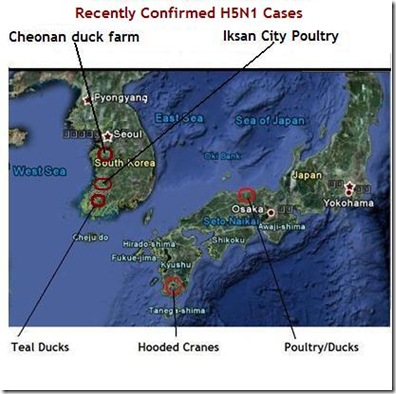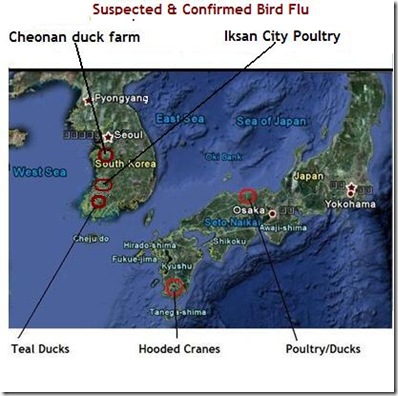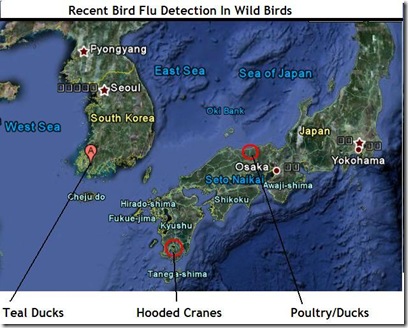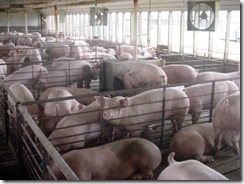# 5195
The HPA has released their weekly influenza surveillance report, and once again it shows a significant increase in flu-like illness across that nation.
Consult levels have not reached epidemic proportions, although that could still happen over the next couple of weeks.
Links, some excerpts, and a few graphs from this week’s report follow:
Weekly national influenza report, 30 December 2010
31 December 2010
Latest figures from the Health Protection Agency (HPA) indicate that levels of seasonal flu are continuing to increase across the UK.
The two main strains of flu circulating are Influenza A H1N1 (2009) 'swine' flu and Influenza B, with H1N1 being the predominant strain. A small proportion of flu cases are resulting in severe disease, particularly in people under the age of 65. This is due to the fact that H1N1 is more likely to infect young people and, unfortunately, a very small number of these may develop severe disease.
In the past week, the HPA has been notified of a further 12 people who have died with confirmed flu, bringing the total number since the flu season began in October this year to 39. 36 of these people died with the H1N1 (2009) strain and 3 with Influenza B. All except one case were under 65 years of age and four were under the age of five.
Where information is available on the fatal cases, 23 out of 38 (61 per cent) of those who have died were in a clinical 'at risk' group for vaccination.
Where vaccination status is known for this season's trivalent vaccine, only two people out of 33 had received their jab. Last year's pandemic vaccine was only received by one person out of 30, where information is available.
HPA Weekly National Influenza Graphs (PDF, 678 KB)
HPA Weekly National Influenza Report - week 52 (2010) (PDF, 331 KB)
Report published 30 December 2010
Summary
Influenza activity continues to increase across the UK. GP consultation rates are now above baseline levels in all four countries. Influenza A H1N1 (2009) and B are the predominant circulating viruses with few, sporadic A (H3N2) viruses detected. The H1N1 (2009) virus strain is virologically and epidemiologically similar to that seen during the pandemic. The virus strains circulating are overall well matched to the current influenza vaccine. The HPA expects to see continued elevated influenza activity for several weeks.
- In week 51 (ending 26 December), the weekly ILI consultation rates increased across the UK. The weekly influenza/influenza-like illness (ILI) consultation rates remain above baseline levels in England (124.4 per 100,000) and Wales (92.1 per 100,000). The rates have now increased above the baseline in Scotland (58.4 per 100,000) and Northern Ireland (99.4 per 100,000).
- The weekly national proportion of NHS Direct cold/flu calls for week 51 has increased however, the daily proportion has decreased slightly to 10.4% on 28 December, from a peak of 12.9% on 21 December. The proportion of calls for fever in the 5-14 year age group decreased from 21.6% to 16.8%, though this remains above the baseline level of 9%. This suggests the possiblity that we may be approaching the peak of influenza activity.
The number of ILI (influenza-like-illness) GP consults in the latest reporting week (red line) remain roughly half of what was seen during the 1999-2000 epidemic, but are approaching that seen during the summer peak of the 2009 pandemic.
The age group most often seen by GPs last week for ILIs was age 1-4, followed by those 5-14 years of age, and then young adults. Unlike most years, those over 65 years of age were the least commonly seen cohort.
While obviously a serious flu outbreak, the overall numbers haven’t come close to those seen during the disastrous 1999-2000 flu season. What makes this year unique, and distressing, is the burden this particular virus places on young adults and children.
The numbers reported – particularly 39 fatalities – should be taken with a large boulder of salt.
Most flu-related deaths are not recorded as such, and so `official numbers’ such as these almost always represent a significant undercount of the real toll.
Although this report suggests the outbreak may be close to peaking, the next couple of weeks – with the reopening of most schools on January 4th – will be closely watched.














